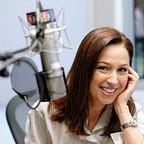What’s the Best Way to Measure Happiness?
How data distracts us from feeling joy
How much? How many? These are the questions our gadgets answer for us all day long: We see how many steps we walked, minutes we spent tossing or turning overnight, hours we started at a screen. But technology can’t measure everything. Other, more nebulous concepts, like happiness, creativity, and pain, are harder to translate into data. And yet, we humans love to try.
The United Nations, for example, puts out the annual Happiness Report using a scale called the Cantril ladder, which asks citizens of each country to “think of a ladder, with the best possible life for them being a 10, and the worst possible life being a zero.” For the fourth year in a row, Finland was ranked the happiest country in the world, but, as the New York Times reports, that title left some Finns shrugging at the subjective nature of happiness.
Another attempt to capture a nebulous human state is the “Alternative Uses Test” which creativity researchers use to try and measure how innovative or ingenious a person is. The method, developed by the American psychologist J. P. Guilford in 1967, asks a participant to take an everyday object, like a brick, cups, paper clips, or a chair, and come up with as many uses for it as possible in two minutes. They are then scored on these four criteria:
